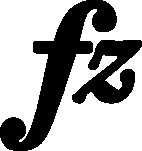




The staccato marks with which Chopin marked the sequence of thirds in A can be interpreted as dots or wedges. According to us, Chopin wrote dots, which he then turned into wedges, or the other way round – wedges that he tried to replace by dots. Taking into account  dynamics and the clear wedges over the chords marked with
dynamics and the clear wedges over the chords marked with  and
and  in bar 178, we consider dots to be more likely as the final markings. However, the wedges present in the sources can be considered an equally valid variant.
in bar 178, we consider dots to be more likely as the final markings. However, the wedges present in the sources can be considered an equally valid variant.
Compare the passage in the sources»
category imprint: Graphic ambiguousness; Differences between sources; Corrections & alterations
issues: Corrections in A, Wedges, Inaccuracies in A
notation: Articulation, Accents, Hairpins


